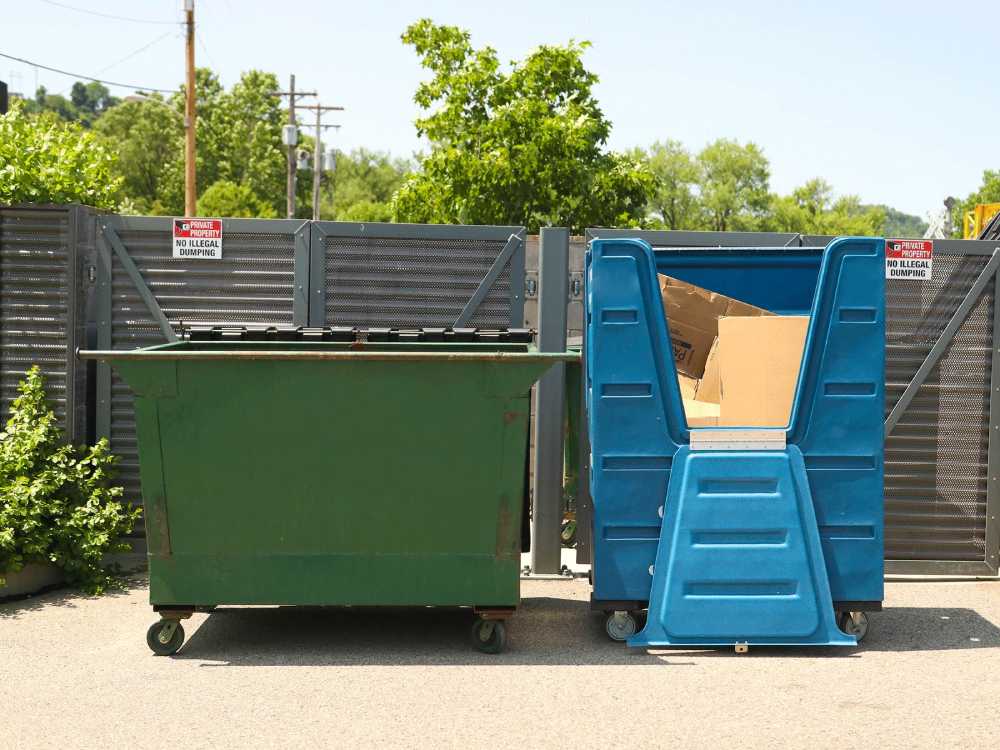Ensuring your staff knows the correct usage of recycling bins in your facility is essential. Proper disposal of waste materials helps create a cleaner, greener environment.
A waste assessment is essential to discovering which materials are tossed in the trash or recycling. It also helps you to determine your goals for a zero-waste program and implementing sustainable practices.
Equipment
The first step in establishing your commercial recycling program is determining the type and amount of materials your company generates. It can be done through a waste assessment or by regularly weighing the materials. This information is used to help establish a baseline and measure program success.
Once you have isolated the recyclable materials that make up your business’s waste stream, you must find containers. A good location for these bins is in heavy traffic areas near where the waste is generated. For example, a waste assessment might suggest placing desktop containers for paper near copy machines and larger leak-resistant bins for bottles and cans in cafeteria areas.
Labeling these containers will help prevent employees from mixing in the trash and make locating them more accessible. Involving your janitorial staff in designing your recycling program is also an effective way to get them on board and increase participation. Then, once the program is in place, have a meeting or educational session and announce the new recycling system to your entire workforce.
Bins
The first step in any commercial recycling program is to get a handle on the waste your space generates. You can start by looking at your garbage cans to see how much and what types of materials are leaving your premises.
Once you know how much waste your business generates, it’s time to line up a trash and recycling hauler. Make sure they’re set up to accept the waste streams you want to collect and check that they can meet your schedule.
A bin is a range of continuous values that simplify data visualizations, such as histograms. Choosing your bins is essential because it can impact how quickly you can spot outliers in your data.
Haulers
Consider whether your current trash hauler also offers recycling pickup depending on the venue’s size, frequency of recycling collection, and storage space availability. Using one truck to collect and transport waste and recyclables can save money.
In addition, having a transparent label on each container will reduce contamination. Contamination occurs when a foreign material (like a half-eaten pizza slice) is mixed in with the recycling, making it unusable. Different colored bins for waste and recyclables will also make it easier to identify them.
There are several ways to do this, including using existing mechanisms such as business forum presentations, local chamber of commerce meetings, or the existing annual renewal license letter to provide information about the requirement.
In addition, community groups and local recycling companies can directly contact businesses to explain the requirements. It may include presenting at a business meeting or providing technical assistance through waste assessments. This type of interaction can be critical in achieving compliance with the requirement.
Containers & Signage
If your workplace uses multiple containers for different streams (paper, glass, cans, compostables), labels and signage are essential for keeping them separate. Large, eye-level messaging displaying what can be recycled in each container will help encourage proper separation. For example, “Recycling: paper, cans, glass” is more effective than a simple bin label that says “paper” alone.
The color and design of your recycling containers should be consistent across your entire facility or campus to help staff recognize them. It’s also essential to avoid negative messaging around your recycling program, focusing on what can be recycled rather than what cannot have a more significant impact.
Depending on your building’s size, it may be necessary to identify areas for central bin storage where the waste and recycling will sit until your hauler collects it. Ensure that these locations meet local zoning and fire code requirements. And remember to include the proper liners for your collection containers! These will make it easier for custodial and janitorial staff to empty and refill the containers. It will also minimize the amount of trash in your recycling bins.
Training
Educating employees is a critical component of building an effective commercial recycling program. In addition to classroom instruction, networking with experts in zero waste policy and certification is an excellent way for businesses to get the most out of their recycling program.
It is also essential that everyone who handles recycling materials – custodial staff and outside contractors – understand how the program works and what is involved. It includes understanding local zoning and fire codes related to the size, location, and screening of storage containers. Staff should be trained on safety procedures around the trucks and lift systems that empty the containers.
Regular follow-up and reinforcement of the dos and don’ts of the recycling program are also helpful. It can be done through meetings, memos, and newsletters. It is also a good idea to periodically congratulate employees who have successfully reduced the waste they produce at work. It will help to keep the momentum going. It will also help to reinforce the positive environmental impact that recycling is making.


